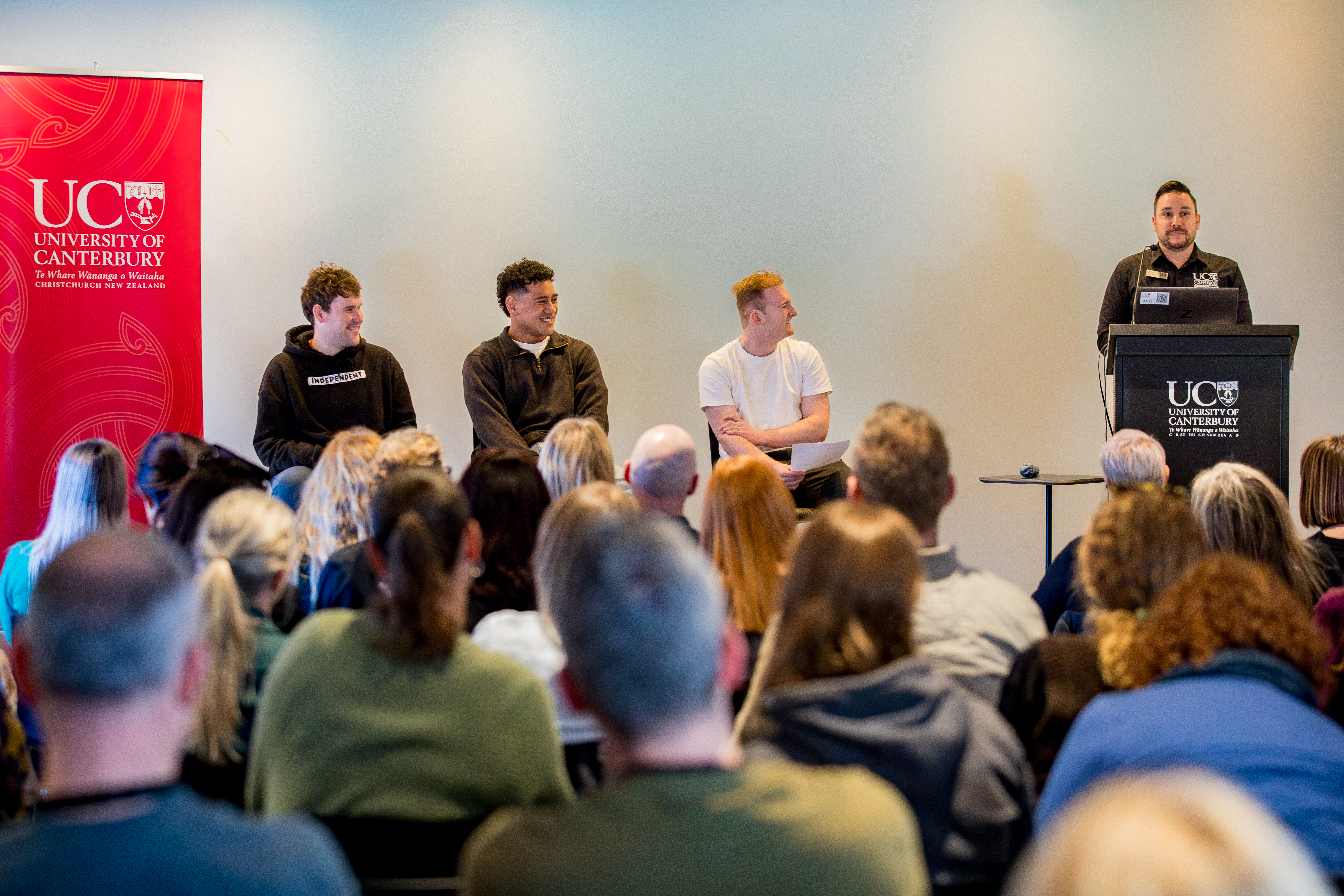Photo caption: Professor John Dalrymple-Alford is one of the lead researchers on Parkinson’s: Are some answers but a tear away?, to receive a Project Grant from the Neurological Foundation.
UC Dr Gretel Major has been awarded a First Fellowship grant for her research on Duchenne muscular dystrophy, and UC Professor John Dalrymple-Alford and Dr Vanessa Morris have received a Project Grant to further investigate the impact of Parkinson’s disease on bodily functions beyond movement.
Te Whare Wānanga o Waitaha | University of Canterbury (UC) lead researchers believe it could aid the clinical diagnosis of patients. If so, this would also be useful to determine if someone is at risk of Parkinson’s, as well as help doctors monitor and manage earlier treatment for the disease itself.
“Currently, a lumbar puncture is the best way of testing this – but this procedure is invasive, expensive, and currently only used in a research context,” says Professor Dalrymple-Alford. “Blood and other tissues are also being evaluated, but the prospect of using people’s tears has many benefits.
“Collecting tears is a low-impact procedure. It uses a sterile strip of “filter paper” to collect tear fluid from the lower surface of the eye. This would be ideal for an initial clinical test of the key molecular sign of Parkinson’s. So, this long-standing medical technique might now be part of a regular diagnostic examination for Parkinson’s.”
Frequent testing using tears is simpler and better tolerated by the patient than repeat blood sampling. “Tears also provide an easy source of a host of biological material so other factors can be tested at the same time.”
There’s been growing interest in looking at the eye and its tears to help understand medical conditions. This research is the first to adapt the latest biochemical techniques to use tears to uncover some of the hidden secrets of Parkinson’s.
The researchers say they’ll compare the results from people with Parkinson’s with those from people who show evidence of Alzheimer’s disease, as well as tears from age-matched controls. They’ll look for changes that are both specific to, and overlap, the two neurodegenerative conditions.
Professor John Dalrymple-Alford and Dr Vanessa Morris
Parkinson’s: Are some answers but a tear away?, funded $307,444.
Parkinson’s disease has a significant impact on mental health and many body functions well beyond the common notion of a movement disorder. A specific protein abnormality is the hallmark of Parkinson’s. Previously, this was detectable only through brain autopsy. Recent advances uncovered its presence in the fluid bathing brain and spinal cord, but this requires a spinal puncture. Instead, we have pioneered the idea of finding the abnormality within the eye’s tears – a simple, low-impact procedure. Moreover, tears will reveal many other hidden secrets of Parkinson’s disease. Our development may enable earlier diagnosis and therapeutic intervention for people with Parkinson’s.
The team working on this project
Lead investigators: Professor John Dalrymple-Alford & Dr Vanessa Morris (New Zealand Brain Research Institute and University of Canterbury) and Associate Professor Joanna Williams (University of Otago). Other key investigators: Professor Tim Anderson, Associate Professor Tracy Melzer, Dr Toni Pitcher, Dr Daniel Myall & Dr Campbell Le Heron (New Zealand Brain Research Institute and University of Otago); Diane Guévremont, Dr Nick Cutfield and Professor Chris Frampton (University of Otago); and Professor Lynette Tippett & Dr Erin Cawston (University of Auckland). Tim Anderson and Campbell Le Heron are also members of Te Whatu Ora Waitaha Canterbury, and Nick Cutfield is a member of Te Whatu Ora Southern.
Dr Gretel Major
Understanding the impact of chronic glucocorticoid treatment on the brain-stress axis in Duchenne muscular dystrophy, funded $216,923.
Duchenne muscular dystrophy is a muscle wasting disease with associated neurological disorders. It is managed using anti-inflammatory drugs called glucocorticoids that slow muscle wasting, but their long-term effects on the nervous system are unknown. Glucocorticoids work by suppressing the brain-stress hormone pathway, potentially blocking the body’s ability to respond to stress. This project will assess how chronic glucocorticoid treatment impacts the stress response and neurocognitive behaviours. This will provide insights into the neurological effects of Duchenne treatments, to better inform patients and healthcare strategies.
Dr Major is mentored by Dr Angus Lindsay and Dr Vanessa Morris, University of Canterbury










